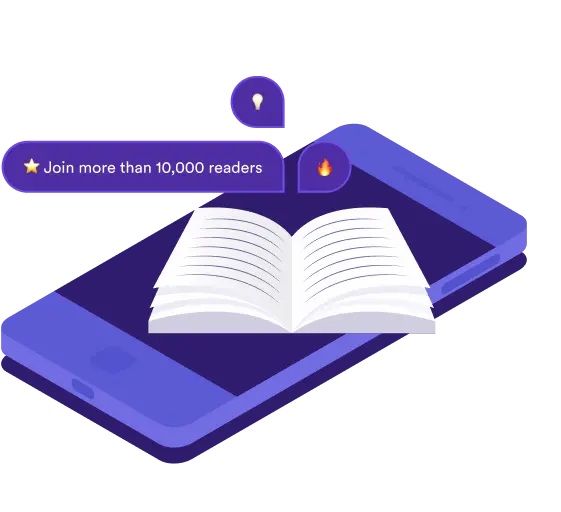
Enjoying Snackz.ai?
Sign up!
or
I agree to the Privacy Policy and the Terms of Service.
Already have an account?
📩 Check your inbox!
A link to reset your password has been sent to your email address.
Reset Password
No worries! Just enter your email below, and we'll help you reset that password:
Enjoying Snackz.ai?
Sign up!
or
I agree to the Privacy Policy and the Terms of Service.
Already have an account?
📩 Check your inbox!
A link to reset your password has been sent to your email address.
Reset Password
No worries! Just enter your email below, and we'll help you reset that password:
Jack Weatherford
Where would you like to order?
Please select your country to proceed with the checkout.
⚡ Free 3min Summary
Genghis Khan and the Making of the Modern World - Summary
Jack Weatherford's 'Genghis Khan and the Making of the Modern World' portrays Genghis Khan as a visionary leader who transformed the world through cultural exchanges, expanded trade routes, and progressive policies. The book challenges traditional views of Khan, highlighting how his leadership facilitated unprecedented global connections and innovations that shaped the modern era.
Key Themes
Cultural Exchange and Trade Expansion
Genghis Khan's empire facilitated the exchange of goods, ideas, and technologies across vast distances. This period saw the flourishing of the Silk Road, which connected the East and West, allowing for a significant flow of knowledge and cultural practices that enriched civilizations on both ends.
Progressive Governance
Contrary to the brutal image often associated with him, Genghis Khan implemented progressive policies. He abolished torture, promoted religious freedom, and dismantled feudal systems. These reforms contributed to a more equitable society and laid the groundwork for modern governance principles.
Military Strategy and Innovation
The Mongol army, under Genghis Khan's leadership, was known for its innovative strategies and adaptability. Their ability to integrate various military tactics from conquered regions and their use of psychological warfare were key to their success. This not only expanded their empire rapidly but also influenced military strategies in subsequent generations.
FAQ's
The main focus of 'Genghis Khan and the Making of the Modern World' is to present Genghis Khan as a transformative leader who significantly influenced global history through cultural exchanges, trade expansion, and progressive governance.
The book challenges common perceptions by portraying Genghis Khan not just as a conqueror but as a visionary leader who implemented progressive policies, promoted religious freedom, and facilitated cultural and technological exchanges that shaped the modern world.
Some key contributions highlighted include the facilitation of the Silk Road, the implementation of progressive governance policies, and innovative military strategies that not only expanded his empire but also influenced future generations.
💡 Full 15min Summary
Born amidst tribal violence in Mongolia, Genghis Khan faced a challenging childhood marked by kidnapping, enslavement, and numerous hardships. Despite these adversities, he demonstrated remarkable resilience and leadership skills from an early age. He formed a friendship with a boy who would later become his fiercest adversary and found his lifelong love.
Over time, Genghis Khan triumphed over all the tribes on the Mongolian steppe, leading to the establishment of the Mongol nation in 1206. Even at the age of 50, when most conquerors would have retired, his ambitions only intensified. Guided by his Spirit Banner, he journeyed across Asia, employing innovative strategies to conquer more territories and populations than any other ruler in history. His cavalry revolutionized warfare, rendering armored knights obsolete. He bridged civilizations from China to Europe, facilitating the spread of technology and knowledge.
Despite his reputation as a ruthless conqueror, Genghis Khan implemented policies of religious freedom, meritocracy, and trade. His progressive approach sparked a global awakening that significantly influenced the modern world. However, he is often mischaracterized as a savage destroyer due to the Mongols' secrecy about their leader's life, which has led to the proliferation of myths and distortions. With newfound access to his homeland and the decoding of The Secret History of the Mongols, it is now possible to gain a more accurate understanding of Genghis Khan's character and his vast influence. Let's dive into his story.
Enjoyed the sneak peak? Get the full summary!
Let's find the best book for you!
Get book summaries directly into your inbox!
Join more than 10,000 readers in our newsletter

Get the books directly into your inbox!
✅ New Release
✅ Book Recommendation
✅ Book Summaries
Copyright 2023-2025. All rights reserved.
